Intelligent Patience
How to have resilience and practice the art of intelligent waiting.
The movie Karate Kid comes to mind, where a young man eager to learn martial arts quickly meets a patient teacher. The lesson learned is clear: patience is rewarded in the end.
Patience is the practice of maintaining a state of calm and resilience when you are tempted to be impatient, especially when the mind wants to force results, rather than remain in flow.
Patience and Career Progression
We all feel stuck sometimes and we should look for small signs of progression to move on and see the bigger picture. This article from HBR argues that when people feel that their career progress is frustratingly slow, they can become dangerously demoralized. But often these people are simply not giving themselves enough time to succeed. They need to cultivate “strategic patience.”
Professor Dorie Clark, the author of The Long Game: How to Be a Long-Term Thinker in a Short-Term World argues that just as CEOs who optimize for quarterly profits often fail to make the strategic investments necessary for long-term growth, the same is true in our own personal and professional lives. We need to reorient ourselves to see the big picture.
In Jeff Bezos, 2018 letter to Amazon shareholders he makes a anecdote about a friend who visited a handstand coach in a yoga class.
A close friend recently decided to learn to do a perfect free-standing handstand. No leaning against a wall. Not for just a few seconds. Instagram good. She decided to start her journey by taking a handstand workshop at her yoga studio. She then practiced for a while but wasn’t getting the results she wanted. So, she hired a handstand coach. Yes, I know what you’re thinking, but evidently this is an actual thing that exists. In the very first lesson, the coach gave her some wonderful advice. “Most people,” he said, “think that if they work hard, they should be able to master a handstand in about two weeks. The reality is that it takes about six months of daily practice. If you think you should be able to do it in two weeks, you’re just going to end up quitting.” Unrealistic beliefs on scope – often hidden and undiscussed – kill high standards. To achieve high standards yourself or as part of a team, you need to form and proactively communicate realistic beliefs about how hard something is going to be – something this coach understood well.
JEFF BEZOS
We all need long term strategy.
Beijos,
Babi
https://barbaracraveiro.substack.com/p/intelligent-patience
Uncertainty
When we make predictions confidently, it allows us to adapt, process emotions like sadness, accept the situation, and prepare for what's to come. By enhancing our ability to predict and increasing our confidence, we can alleviate anxiety.
Calm mind, intuition and planning make us feel less anxious. The goal is to have better visibility of what is coming next and to bring certainty to our lives.
Stoic philosophy has a lot to teach on how to better manage our thoughts regarding uncertainty. I am quoting some passages by Seneca.
“We are more often frightened than hurt; and we suffer more from imagination than from reality.” — Seneca
“The man who has anticipated the coming of troubles takes away their power when they arrive.” — Seneca
“The whole future lies in uncertainty: live immediately.” — Seneca
Don’t believe in everything you think, specially thoughts that drive us to worst case scenarios assumptions. Our brains perceive ambiguity as a threat, and they try to protect us by diminishing our ability to focus on anything other than creating certainty.
“Uncertainty is the only certainty there is”
John Allen Paulos, mathematician
When enough is enough?
When ambition turns into greed?
Greed is a multifaceted concept explored extensively across psychology, economics, and philosophy. It typically denotes an intense and selfish desire for wealth, power, or other forms of gain.
One of the most infamous examples of corporate greed is the collapse of Enron. Driven by an insatiable desire for higher profits and personal wealth, Enron's executives engaged in risky business ventures and manipulative accounting practices to hide debts and inflate profits. This created a corporate culture where unethical behavior was normalized, with executives prioritizing personal gain over corporate integrity. The promise of substantial bonuses and stock options further fueled this behavior, leading to catastrophic failure.
Another striking example of corporate greed is the collapse of Barings Bank in 1995. A trader at Barings, driven by the desire for large profits and personal bonuses, engaged in unauthorized speculative trading on the Singapore International Monetary Exchange (SIMEX). Initial significant profits led to increasingly risky trades, culminating in massive losses hidden in secret accounts. Similar to Enron, the culture at Barings incentivized short-term gains over long-term stability and ethical behavior, resulting in a lack of critical oversight and eventual collapse.
Greed's destructive potential is not confined to the corporate world. I just finish reading Orlando Whitfield's memoir "All That Glitters" that delves into a scandal in the art world, highlighting how ambition and greed can lead to downfall. The book tells the story of Inigo Philbrick (The Art World’s Mini-Madoff), whose greed-driven actions led to an $86 million fraud, ultimately sabotaging his life for financial gain. Apparently the story will become an HBO show.
Ambition vs Greed
Greed and ambition, while both driven by a desire for more, differ fundamentally. Greed is an excessive, unethical pursuit of personal gain, often at others' expense, as seen in the Enron scandal. Ambition, however, is a focused and ethical drive towards personal and professional growth, fostering positive outcomes like innovation and progress.
I wonder how many times those involved in these scandals asked themselves, "Should I stop, when enough is enough?"
Beijos
Babi
https://barbaracraveiro.substack.com/p/when-enough-is-enough
Boredom
The Hidden Catalyst for Creativity
Boredom is often viewed negatively—an uncomfortable state we strive to avoid in our fast-paced, entertainment-driven world. Yet, in those quiet, idle moments, remarkable things can happen. Boredom, it turns out, can be a powerful catalyst for creativity, self-discovery, and personal growth.
Here are some remarkable creations that emerged out of boredom:
- Isaac Newton: During a period of enforced idleness when the University of Cambridge was closed due to the plague, the physicist formulated his theory of gravity.
- J.K. Rowling: The idea for Harry Potter came to Rowling during a delayed train journey from Manchester to London in 1990.
- Jack Dorsey: While working on a different project at Odeo, a podcasting company, Dorsey grew bored and frustrated with the lack of innovation. This led him to conceive the idea for Twitter.
- Blaise Pascal: Out of boredom, Pascal developed the first mechanical calculator, known as the Pascaline, in 1642. This device was initially created to assist his father with tax computations and laid the foundation for modern computing.
In a world where instant gratification is the norm, the ability to tolerate and even embrace boredom is a valuable skill. It teaches us to be comfortable with stillness and to find contentment in our own company. This can lead to a greater sense of inner peace and emotional stability.
In the digital age, where distractions are only a click away, it can be difficult to experience true boredom. We live in a never-ending stream of entertainment and information. However, this constant stimulation can be overwhelming and can prevent us from experiencing the benefits of boredom. This article from FT talks about the benefits of boredom and an exercise that made you use less technology.
When I work with boredom, or indeed any “negative” emotion, I encourage my clients to approach it with curiosity, which in itself is a natural antidote to ennui.
Lilah Raptopoulos - host of Life and Art FT
This other article from HBR says:
boredom boosts creativity because of how people prefer to alleviate it. Boredom motivates people to approach new and rewarding activities - an idle mind will seek a toy. (Anyone who has taken a long car ride with a young child has surely experienced some version of this phenomenon.)
To embrace boredom, it is essential to disconnect from time to time. Stepping away from screens, and allowing ourselves to be still. It might involve taking long walks, practicing mindfulness or meditation, or simply sitting quietly and letting our minds wander. This article from The Economist talks about the return of dumb phones and the value of embracing simplicity in our increasingly tech-saturated lives.
That is why Eton, a posh British school, announced in July that it would bar its future prime ministers from bringing smartphones to school, and would provide them with Nokia phones instead.
When was the last time you let yourself be bored? How did your creative inner self make use of that moment?
Beijos,
Babi
https://barbaracraveiro.substack.com/p/boredom
Hidden Talents
Why some people don’t develop their talents? Writing, painting, singing, coding, surfing, leading …
An article from Harvard Business Review brings some insights about talent in the corporate world. Ability, emotional intelligence and drive to learn and build new things are the 3 topics that boost talent.
Around 20% of individuals are responsible for 80% of the output and vice-versa. This Pareto Effect has been found in virtually any domain of performance. As academic reviews have highlighted, a Pareto effect illustrates the distribution of scientific discoveries, publications, and citations; entrepreneurial success and innovation; and productivity rates. In all these areas 20% of individuals (or less) tend to account for between 80 and 98% of performance.
We should find our talent and work hard to develop it. Fear, shame and insecurity are common on the development journey. Learning how to surpass them is a must.
Even if we don’t develop our talent professionally, we should embrace them, it’s good for the soul and for personal development.
https://barbaracraveiro.substack.com/p/hidden-talents
The Beauty of Inspirational Chaos
Shoreditch corners
Not too longo ago, I found myself wandering through Shoreditch - a chaotic, artsy maze buzzing with creativity. There’s art everywhere: graffiti-covered walls, shops, and even the road signs aren’t “safe”. One of them had wine artistically “spilling” into the word STOP, courtesy of the clever mind of Clet Abraham.

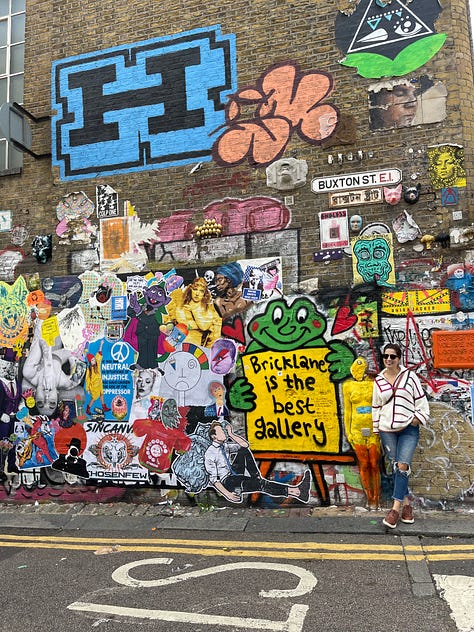






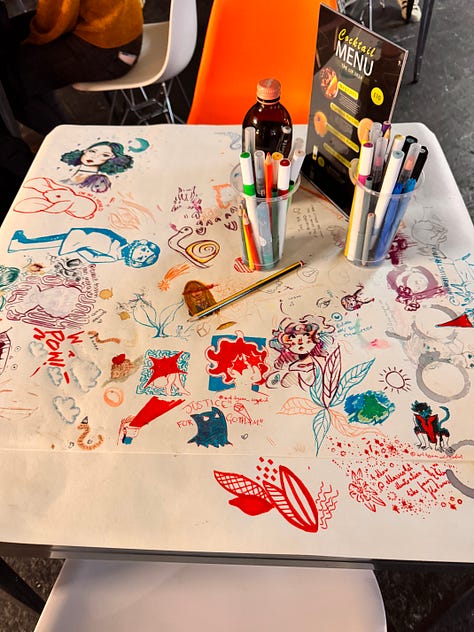
Amid all this creative chaos, I stumbled upon a building that looked like a cool art gallery. I walked in and asked if I could check it out. The front desk person smiled and said, “This isn’t a gallery; it’s an office - Wieden + Kennedy.” Oops. Turns out, W+K isn’t just any office; it’s a legendary creative agency, famous for campaigns like Nike’s Just Do It. Their London office is a reflection of the city’s vibrant, eclectic spirit.
Inside, I learned about their “New Faces” project, where 18 talented illustrators created over 200 portraits of the team. Each piece is unique, capturing the diversity and creativity that define W+K London.
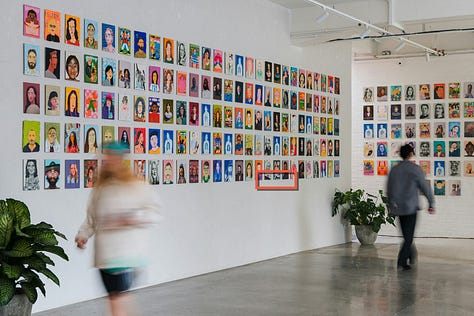

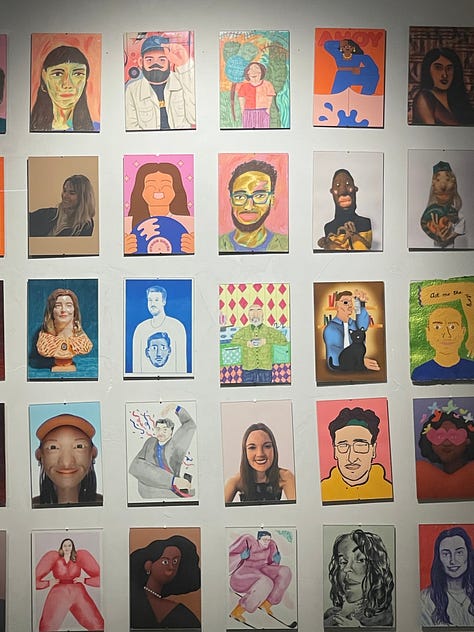
This whole inspirational chaos led me to never forget W+K. Amid Shoreditch’s vibrant chaos, their office stood out like a beacon of creativity.
“Chaos does this amazing thing that order can’t: it engages you. It gets right in your face and with freakish breath issues a challenge. Chaos wants you to grow. It’s the only friend that really helps you be creative.”
Dan Wieden - founder of W+K
Nietzsche - the famous philosopher touched on a similar idea - centuries earlier.
“You must have chaos within you to give birth to a dancing star.”
The quote is often interpreted as an encouragement to embrace the messy, unpredictable aspects of life because they are the source of true brilliance and transformation.
The more I reflected, the more I realized how true this was.
This week, I was playing Dixit with friends, and the connection hit me again. In Dixit, the beauty isn’t just in the cards but in the chaos of interpretation—the layers of thought behind why each card was played. It’s like peeking into someone’s mind, unraveling the stories and reasoning that aren’t immediately visible.
And that’s what makes chaos extraordinary—whether it’s Shoreditch’s graffiti, W+K’s projects, or a simple card game. Chaos doesn’t just make sense; it creates meaning. It inspires, challenges, and ultimately, transforms.
PS: Funny enough, while I love chaos for its creativity, I’m actually someone who thrives on being organized. Maybe that’s why I value chaos—it adds something my structured life can’t. It’s all about balance: enjoying chaos while keeping my world in order (when I can).
Beijos,
Babi

Usurpers of the systems
A take on givers and takers of the world
When I first started drafting this letter, I’ll admit - I was fuelled by frustration over a particular situation. But as I thought more about it, I realised that "usurpers" in systems can take many different shapes. They can be harmful, helpful, game-changing disruptors, or even essential drivers of progress.
This idea of "usurpers" plays out across various domains: nature, human behaviour, the corporate world, society, and economics. In each example, usurpers carry a double-edged meaning. They’re not inherently good or bad.
Their impact depends on intent and outcome, which led me to an intriguing connection: Adam Grant’s concept of givers and takers.
Usurpers of the System and Givers vs. Takers
Grant describes takers as self-serving individuals who exploit others for personal gain, while givers challenge the status quo to create lasting value and inspire trust. Matchers act as balance-keepers, ensuring fairness and accountability by giving as much as they take.
Grant introduces nuance with agreeable and disagreeable givers and takers, using the humorous examples below to emphasize that what truly defines a person’s role within a system is intent and outcomes—not appearances.
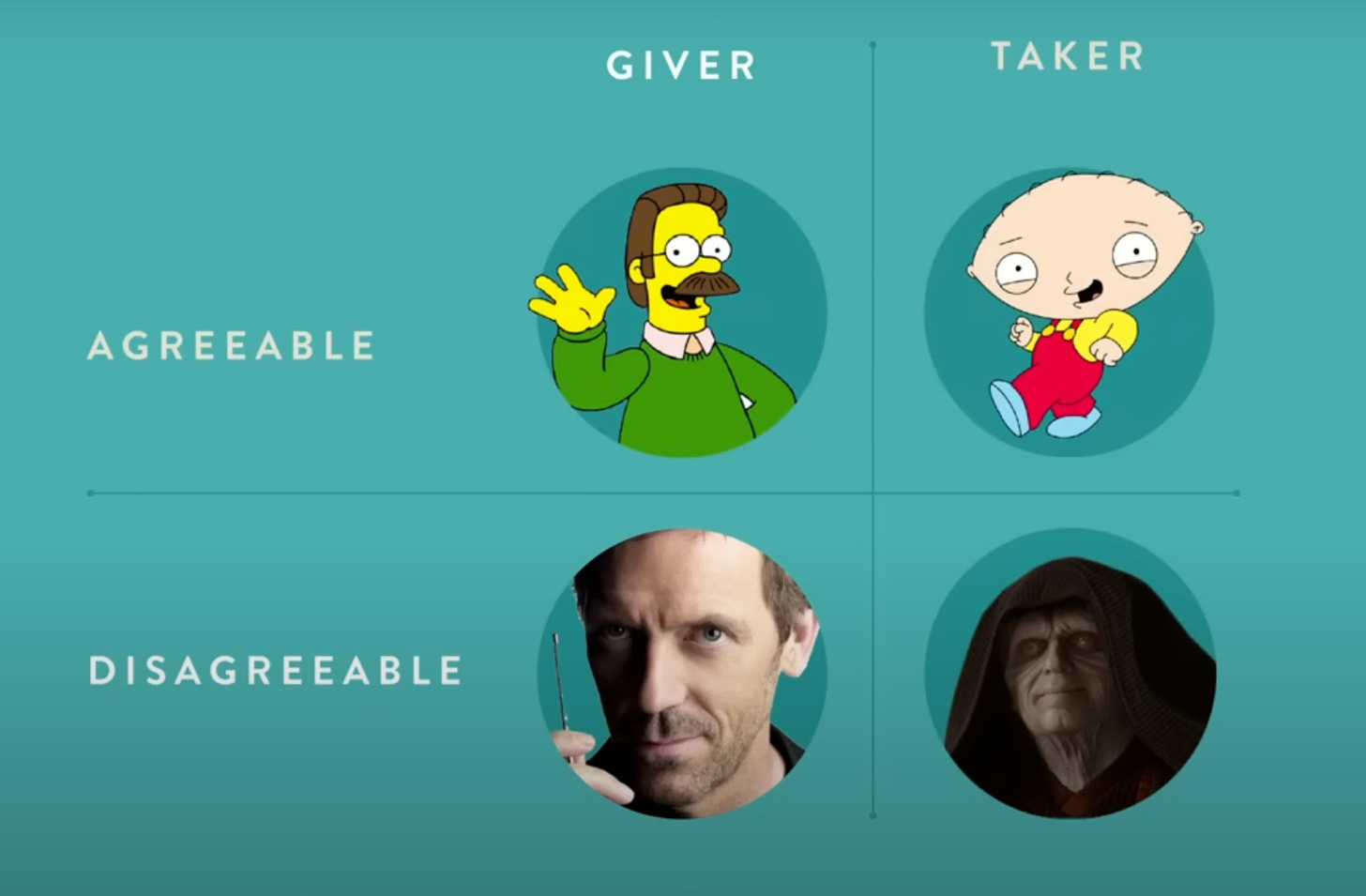
Examples of Usurpers as Givers and Takers
- Nature:
- T: Parasitic behaviors that destabilize ecosystems by exploiting resources without giving back.
- G: Symbiotic relationships, like bees pollinating flowers, which foster mutual benefit and balance.
- Human Systems:
- T: Sometimes, they act selfishly, exploiting resources without giving back, as seen in the "tragedy of the commons."
- G: Visionary leaders who dismantle oppressive systems and drive innovation for the collective good.
- Corporate and Economic Systems:
- T: Disrupters that prioritize profit over sustainability or ethics, destabilising trust and collaboration.
- G: Entrepreneurs like those behind Fever-Tree, who identified inefficiencies and introduced innovations to reshape industries for the better.
Writing this letter has taught me that usurpers are neither inherently good nor bad; their impact is shaped by intent and outcomes. The challenge lies in fostering systems where those who contribute meaningfully and drive progress are able to thrive.
Beijos,
Babi
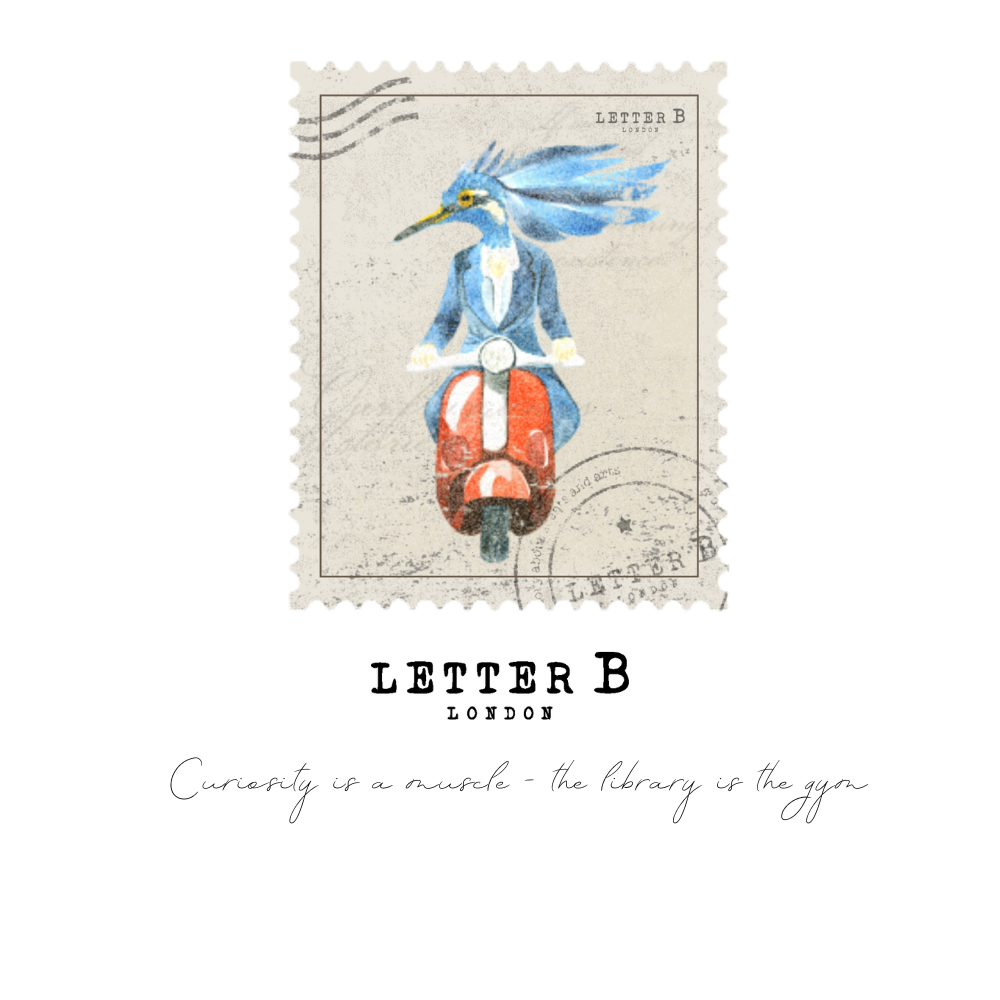
The DJ CEO, the CEO DJ
Balance is about the tune you choose to play.
Life, as the Stoics teach us, is about finding harmony—balancing reason and emotion and practicing moderation in all things. They believed that extremes, whether too much or too little, disturb the peace of the soul. A balanced life brings contentment and strength, no matter what challenges we face.
Keith Richards, in his entertaining memoir Life from the Rolling Stones legend, often shares humorous and unexpected insights about living life to the fullest, unapologetically. He suggests that the key to life is recognising whether you're still humming a tune as you go.
He turns even the strangest ideas into lessons about enjoying life your own way.
“You never, ever, take the shepherd’s pie unless Keith’s broken the crust first.”- Mick Jagger said - referencing Keith’s unique pre-show ritual.
For keith, rituals like this were anchors amid the chaos of touring, offering a moment of comfort and readiness in an unpredictable world.
He once revealed that he prefers to fall asleep holding his guitar because “you never know when inspiration might strike.” I guess it’s his way to stay prepared for life’s unexpected bursts. This is, after all, how the legendary riff for "I Can’t Get No Satisfaction" was born.
Take David Solomon, CEO of Goldman Sachs, whose passion for DJing brought him both acclaim and criticism. Here’s a man leading one of the world’s most high-pressure firms while spinning tracks at Tomorrowland, Lollapalooza, and even his daughter’s wedding. But when the media buzz became too loud, he stepped back—not from the music, but from the limelight. His decision wasn’t about giving up what he loved; it was about recalibrating his balance.
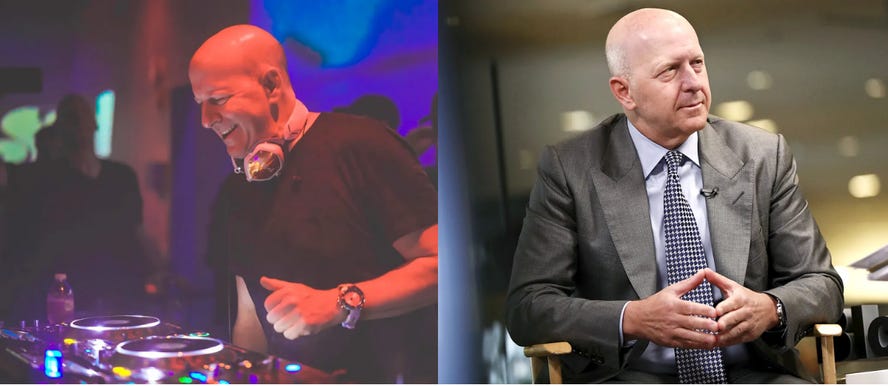
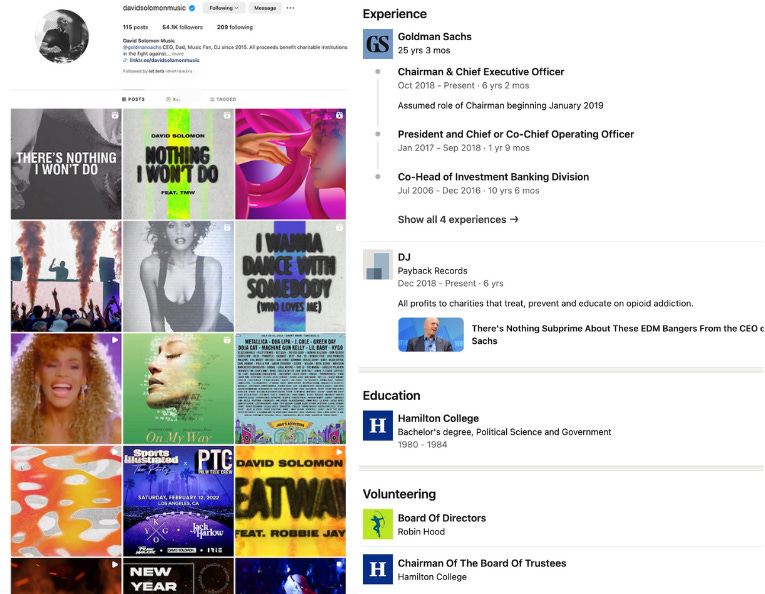
It’s inspiring to see someone like Solomon embrace something so unconventional for Wall Street. While the financial world traditionally leans on golf, poker, triathlon as hobbies, Solomon chose to put himself out there in a way that highlighted his humanity. Critics may have questioned his priorities, but isn’t the real win in knowing when you’re in harmony with yourself?
He has pursued a DJing hobby under the name “DJ D-Sol.” He founded Payback Records in December 2018. All profits to charities that treat, prevent and educate on opioid addiction.
If I were a journalist, I’d write a piece not on his detractors, but on how Solomon’s passion for music makes him one of the most interesting figures in finance - a leader with a creative edge and a refreshing, human side. What a cool guy.
Balance isn’t about perfect symmetry. It’s about making sure we’re still humming, still moving, and still inspired - wherever you are.
For you, what brings you balance?
Beijos,
Babi
The Cruel Woody
How Collaboration, Intuition, and Staying True to Your Ideals Can Redefine Your Path
A few years ago, I read Creativity, Inc.: Overcoming the Unseen Forces That Stand in the Way of True Inspiration and I got to know some stories behind the creation of Pixar and its movies.
In the world of creativity, stories often begin rough, abrasive, and far from the polished narratives we come to love. Such was the case with Pixar's Toy Story and its early conception of Woody, a character who initially embodied cruelty rather than charm. Woody was an asshole.
Woody was a far cry from the lovable cowboy we know today. Initially envisioned as a sarcastic and authoritarian ventriloquist's dummy, Woody ruled Andy’s toys with manipulative cruelty. In one scene, Woody maliciously pushed Buzz out of a window.
The film’s tone was equally problematic, lacking the humor, heart, and warmth that would later define Pixar’s storytelling. Buzz Lightyear, too, was underdeveloped, written as a generic action hero with little depth or humor.
When Disney executives viewed this early version—dubbed the “Black Friday Reel”—they nearly canceled the project.
How the story got into this path?
The movie's storytelling took an edgy and aggressive turn following feedback from high-level executives, leading the team to make significant adjustments. This highlights an important lesson: never underestimate the power of intuition. Below part of the feedback received during the film's production.
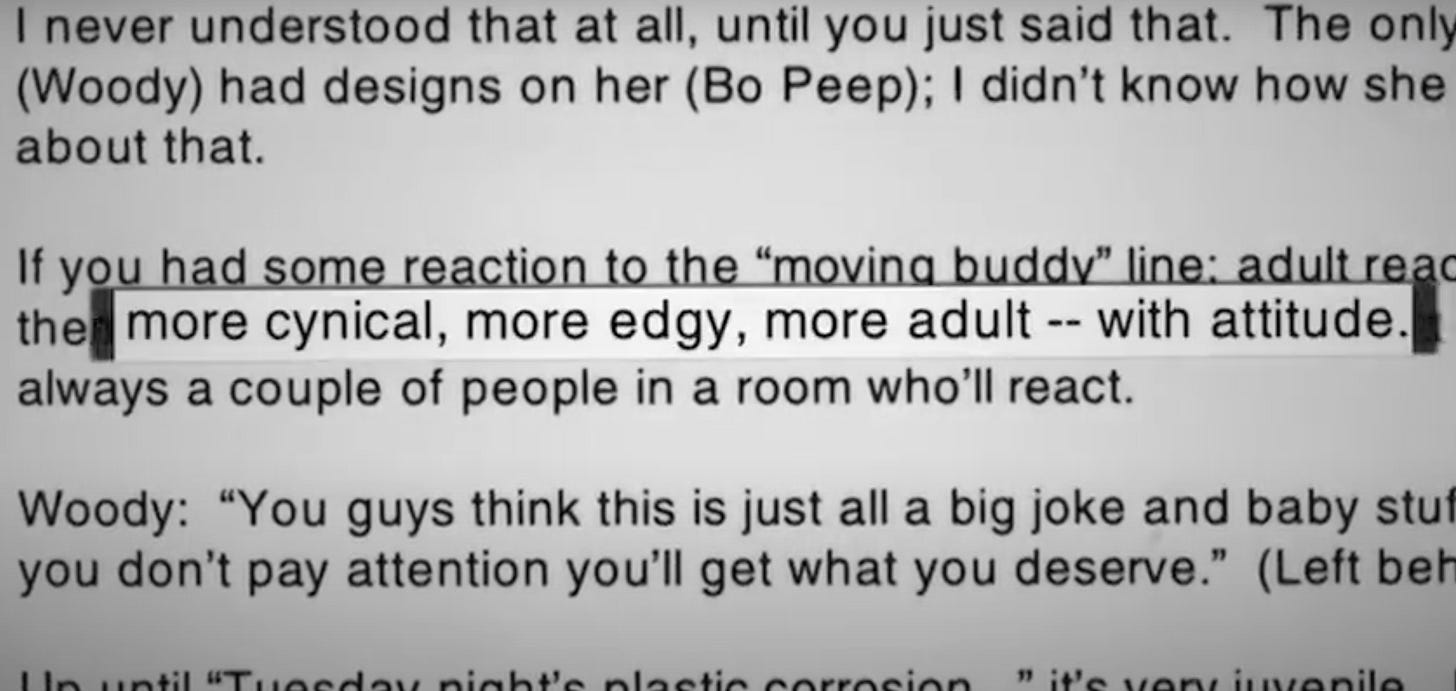
“I was embarrassed with what was on the screen. I made it, I directed it, but it was a story filled with unhappy and mean people”
“Give us two weeks and we will turn the movie around”
John Lasseter - Chief Creative Officer Pixar
The Braintrust Effect
Pixar’s Braintrust, a collaborative team of directors and writers, became the film’s secret weapon. By combining artistic intuition with candid feedback, Toy Story became a testament to the power of collaboration, transforming a flawed narrative into a beloved classic.
Faced with potential disaster, the Braintrust helped reimagine Woody and Toy Story’s core narrative, focusing on emotional resonance and character development. Key changes included:
- Woody’s Redesign: Woody evolved into a flawed but well-meaning leader, grappling with jealousy and fear of being replaced. His rivalry with Buzz was softened, making him more relatable.
- Buzz’s Personality Shift: Buzz became a delusional yet endearing space ranger, adding humor and depth to his character arc.
- Thematic Focus: The film embraced themes of friendship, acceptance, and growth. Woody and Buzz’s journey from rivals to allies became its emotional core.
- Emotional Resonance: The Braintrust emphasized relatability and warmth, ensuring the story connected deeply with audiences.
These changes not only salvaged the project but also set a new standard for Pixar’s storytelling approach.
My Journey with Letter B
When I started creating Letter B, I began by sketching the brand's story, a wacky world, where animals dressed as humans became vivid metaphors for our artistic selves, bringing the narrative to life. Each character comes with their own story, highlighting their favorite hobbies and a touch of their personal background. The first animal I drew was a rabbit, chosen because it symbolises renewal, being one of the first creatures to emerge after winter in the spring. Interestingly, some people compared the drawings to those of Beatrix Potter, the renowned English children’s author.
Intrigued by the comparison, I delved into her story and discovered that she faced numerous challenges and rejections before finally publishing her beloved books. Her perseverance and creativity have since become a source of inspiration.
A Shared Lesson
The origin of Toy Story and Beatrix Potter’s literary journey remind us that everything starts as a rough draft. Through collaboration, innovation, and perseverance, creators can transform even the most unpolished beginnings into stories that endure for generations.
Beijos,
Babi
https://barbaracraveiro.substack.com/p/the-cruel-woody
Maria Alice, George, Steve, Yogananda
Connecting the Dots: Life Lessons from Yogananda
“Reform yourself and you will have reformed thousands.”
“Human will is the dynamo of existence”
“Willpower is what changes thought into energy”
Paramahansa Yogananda
Yogananda (1893–1952) was a spiritual teacher and yogi, known for bringing teachings of Kriya Yoga and meditation to the West and for his book Autobiography of a Yogi, which has inspired millions globally.
In 2019, a year after my divorce, I had begun exploring Buddhism, my mind brimming with questions that felt almost impossible to answer. Then one day, a dear friend recommended a book her mother—a calming, wise doctor—held in high regard. Curious and seeking guidance, I downloaded the book on my Kindle.
Yogis like Yogananda teach us to live in the present, to find beauty in each moment, and to cultivate a sense of balance, inner peace, and unity with the world around us. Over the years, this book has changed not only how I see my personal life but my professional life as well.
Here are a few of Yogananda's teachings and the documentary Awake: The Life of Yogananda provides a beautiful overview of his life and teachings.
- Self-Discipline: Staying focused on meaningful goals.
- Purpose-Driven Work: Crafting missions that genuinely engage both employees and customers.
- Servant Leadership: Yogananda's humility reminds me of The Servant, a book my father gave me at 17. His teachings reflect that true leadership is about supporting others and prioritizing shared goals.
- Mindfulness and Emotional Intelligence: Yogananda's insights on self-awareness and empathy help leaders manage stress and communicate with clarity and compassion.
- Adaptability: his openness to different cultures encourages us to be flexible, embracing new ideas and perspectives.
- Holistic Success: true success goes beyond profit, encouraging leaders to consider well-being, community impact, and ethical practices. This wisdom inspires leaders to pursue not only financial success but also a meaningful impact on society.
This book had a special place in the lives of so many people…
- George Harrison was inspired by Yogananda’s teachings and his spiritual journey and wrote his song "My Sweet Lord" - an international #1 hit by the end of 1970.
- Steve Jobs kept Autobiography of a Yogi—apparently the only book on his iPad—and reread it yearly, asking for it to be shared at his memorial.
He drew on Yogananda’s wisdom to fuse ancient teachings with modern technology, aiming to unlock human potential.
“You can’t connect the dots looking forward, only looking backward.”
Jobs - Stanford speech
Thank you, Maria Alice, for opening my eyes to a brighter and wiser world through this masterpiece—a book that will remain a source of guidance, comfort, and self-love for years to come.
Beijos
Babi
https://barbaracraveiro.substack.com/p/maria-alice-george-steve-yogananda

